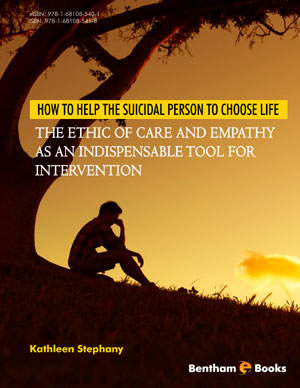Abstract
Chapter two pointed out how stigma negatively impacts people who suffer from mental illness and/or suicidal ideation. Stigma can actually prevent patients from seeking the help that they need. What is alarming is that some of the most distressing stigma that people experience is perpetrated by health professionals. Health professionals who do engage in acts of stigmatization breach the very essence of what the ethic of care stands for. Educational endeavors need to be pursued in order to stop all discrimination. The lived experiences of two patients who presented to the emergency Room (ER) after a serious suicide attempt, was reviewed. Analysis revealed that their suicide attempts were not considered serious by staff and stigma likely played a role. No care plan or follow-up was arranged upon their discharge from the ER. Yet, research has demonstrated that the strongest indicator of a completed suicide is a previous attempt. Subsequently, caregivers were admonished to learn how to differentiate between a deliberate suicide attempt and other forms of self-harm. Dispelling preconceived assumptions about suicide that are not true was presented as another way to help to prevent suicide. It was also pointed out that some suicide risk assessment tools and/or frameworks are limited, and because the causes of suicide are multi-dimensional assessing suicide risk is not always a precise predictor of future outcomes. The warning signs of suicide were highlighted followed by a detailed 11 step process on how to conduct a thorough and focused suicide risk assessment. Key components of a Safety Plan was underscored. A narrative case study was presented as told by a Psychiatrist who was admitted to hospital after being diagnosed with depression, suicidal ideation and plan. Two key themes surfaced. There was a degree of personal shame experienced by the Psychiatrist associated with the notion of becoming depressed and suicidal. A patient’s experience of shame associated with having a mental illness can also be made worse when they feel judged by their caregivers. In short, a few simple strategies to increase gatekeepers’ self-awareness were highlighted as a means to dispel stigma.
Keywords: Access to means, Borderline personality disorder, Care plan, Compassion, Discrimination, Emergency room, Empathy, Ethic of care, Gatekeeper, Gesture, Journal, Lived experiences, Open-ended question, Parasuicidal gesture, Preconceived assumption, Protective factors, Rapport, Risk factors for suicide, Safety plan, Self-awareness, Stigma, Suicidal ideation, Suicidal plan, Suicidal thoughts, Suicide risk assessment, Suicide risk assessment tool, Warning signs of suicide.


















